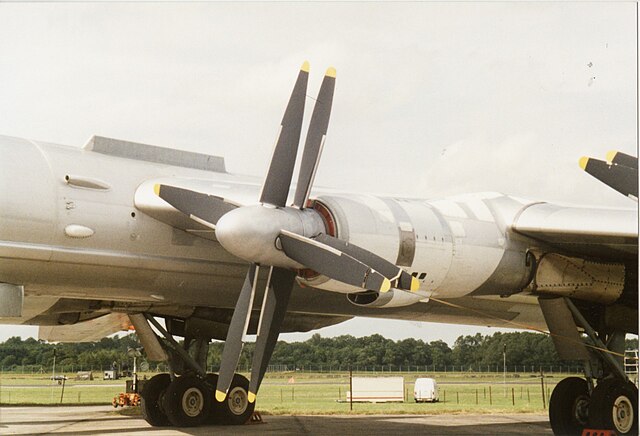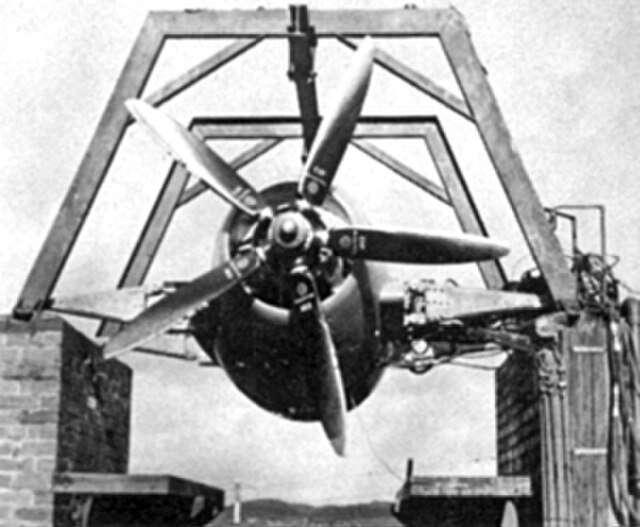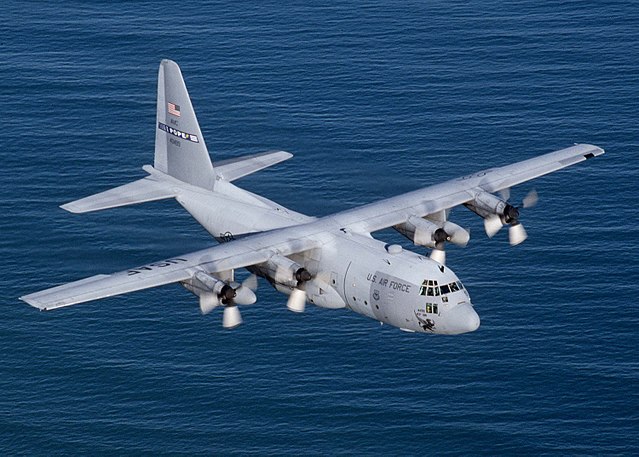Contra-rotating propellers
Aircraft equipped with contra-rotating propellers (CRP) coaxial contra-rotating propellers, or high-speed propellers, apply the maximum power of usually a single piston engine or turboprop engine to drive a pair of coaxial propellers in contra-rotation. Two propellers are arranged one behind the other, and power is transferred from the engine via a planetary gear or spur gear transmission. Contra-rotating propellers are also known as counter-rotating propellers, although the term counter-rotating propellers is much more widely used when referring to airscrews on separate non-coaxial shafts turning in opposite directions.
Contra-rotating propellers on the Rolls-Royce Griffon-powered P-51XR Mustang Precious Metal at the 2014 Reno Air Races
Contra-rotating propellers of a Spitfire Mk XIX
One of the four contra-rotating propellers on a Tu-95 Russian strategic bomber
XB-35 Flying Wing showing its quartet of pusher contra-rotating propellers. The option was later discarded due to severe vibration in flight and later changed to traditional single rotating propellers.
A turboprop is a turbine engine that drives an aircraft propeller.
GE T64 turboprop, with the propeller on the left, the gearbox with accessories in the middle, and the gas generator (turbine) on the right
A Rolls-Royce RB.50 Trent on a test rig at Hucknall, in March 1945
The Kuznetsov NK-12 is the most powerful turboprop to enter service
A military transport aircraft, over 2,500 Lockheed C-130 Hercules have been built







